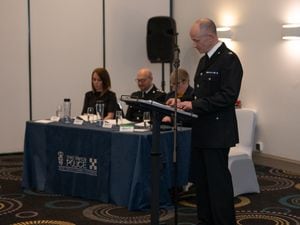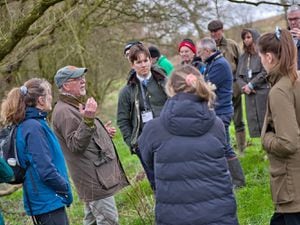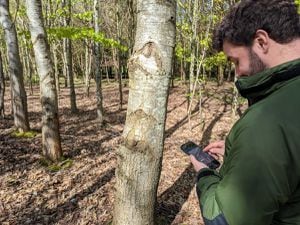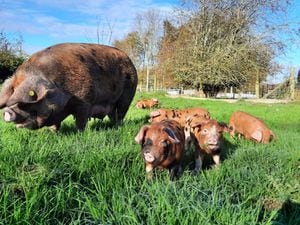Watch: The birth of Telford . . . new town, old worries
They are voices from the past, airing their views on the new town of Telford which was taking shape around them over 40 years ago, writes Toby Neal.
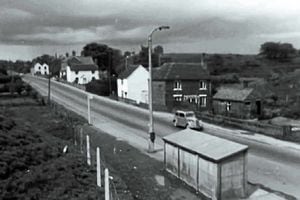
In the decades that have followed, Telford has been transformed with new housing, new infrastructure, a huge shopping centre, and much else. But remarkably, for all the physical changes, some of the concerns of those early Telfordians will still resonate with the modern generation of townsfolk.
And now we can look back to relive fascinating television footage recording the birth of the new town, and the incomers who saw it as an opportunity to build a new life, thanks to a compilation put together by the Media Archive for Central England, a charity dedicated to preserving the film record of the Midlands of yesteryear and make it publicly accessible.
From Dawley to Telford: Building a Community from MACE Archive on Vimeo.
Called "From Dawley to Telford: Building a Community", it comprises archive ATV film. It is being screened online on Mace's Vimeo Channel which has clips and montages of some of the archive's material, including extracts from DVDs which can be bought online.
Shining through the online extracts, which run for just over 30 minutes, is the stark division between old and new which characterised the creation of the new town, and the contrast between the more optimistic tone of the new "incomers" and the less enthusiastic view of Telford held by many of the residents of the established communities.
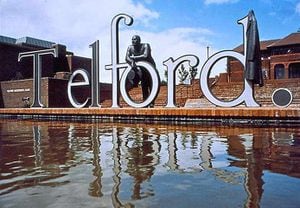
1779: Building of the Iron Bridge, the world's first iron bridge of significant size and a powerful symbol of the status of the Ironbridge Gorge as birthplace of the Industrial Revolution.
1787: Scottish civil engineer Thomas Telford became first surveyor of public works for Shropshire.
1955: On February 16 an article appeared in the Birmingham Gazette written under the pseudonym "Octopus" by Wellington Journal & Shrewsbury News reporter Freddie "Scoop" Bowdler, of Dawley, in which he suggested that Dawley could be used as an "overspill" area for Birmingham. The idea is seized on.
1957: On May 1 Government approval given for Dawley Urban District Council to build 200 houses on the Langley Farm Estate for Birmingham overspill population as a pilot scheme. The keys to the first two families to move in handed over on November 15, 1958.
1963: Dawley New Town officially designated January 16.
1966: Work started on building houses at Sutton Hill.
1968: October 23, announced that Dawley New Town is to be greatly expanded to take in Wellington and Oakengates, and that the enlarged town will be called Telford, after Thomas Telford.
1969: The new Ironbridge Power Station began generating, and Wellington Town renamed Telford United in time for the 1969-70 season.
1973: January 5, first edition of the Telford Journal (combining the old Shropshire Journal and Telford Observer) printed. October 2, The first shops, Carrefour and Sainsbury's, opened at the new Telford town centre.
1977: Ironbridge Gorge Museum wins Museum of the Year Award.
1979: Granville Colliery, Shropshire's last pit, closed.
1980: October 31, Telford Central fire station officially opened.
1981: Queen opens second phase of Telford town centre.
1983: Telford's £27m new hospital given the go-ahead. November 25, the M54, linking Telford to the main motorway network, opened.
1991: September 30, Telford Development Corporation wound up after 23 years, leaving the town to find its own feet.
1998: March 27, Richie Woodhall from Telford became world WBC Supermiddleweight champion at Telford ice rink. On April 1 Telford wins its "independence" from the rest of Shropshire with the advent of Telford & Wrekin Council, a unitary authority.
2006: A £200 million masterplan which would mean refurbishing, rebuilding, or moving almost all the secondary schools in Telford & Wrekin unveiled.
Footage includes rare views of housing and landscapes which were destroyed to create the new town. Although none of the footage in the online compilation bears a date, the bulk of it seems to be from the late 1960s into the early 1970s, capturing the pioneering days.
Telford new town had been designated in 1968, and represented a major expansion of the original early 1960s concept, which was for a new town based on Dawley and taking that town's name.
The original voiceover for the first extract would probably cause indignation among any of the "old 'uns" from Malinslee – either then and now.
Blatantly ignoring the fact that Malinslee was an ancient community and had a Norman chapel, the commentary ran: "Malinslee, Shropshire, a post box and a handful of houses, not the most likely spot for a new city. Malinslee never was much of a place. Loosely sandwiched between the two towns of Oakengates and Dawley, it's been a no man's land deriving no apparent benefit from either town... Malinslee, the place without a past, is to be the centre of a city of the future, the new town of Telford."
Old Malinslee was simply razed to the ground to create "Telford town centre" – which turned out to be a shopping centre which really was in the middle of nowhere. The ancient chapel was dismantled and the stones numbered. For a long time they were "stored" by the side of Hinkshay Road in Dawley. Happily, the chapel was eventually rebuilt and it is today a feature within Telford town park.
There is an interview with the late John Madin, the architect who created the blueprint for Telford new town.
"The first thing we wanted to do was take the frustrations out of city life as we know it today. This meant adopting a policy of dispersal rather than concentration," he says as he peruses a map on the wall.
So, if you're wondering why everything is so spread out in Telford, that's why.
Other officials with their hands on the tiller are also interviewed, but it is interviews with ordinary people which many viewers are likely to find the most telling.
Step forward 25-year-old former soldier Rick Williams, who with his wife and young daughter came to live in a split level house on Sutton Hill.
"I was discharged from the Army and we couldn't find anywhere else to go. Somebody suggested, as it was then, Dawley New Town. Within a matter of hours they offered me a house... We've never regretted it... It was a new place. We wanted to start a new life and when we came here we did start a new life and it's gone from strength to strength."
Asked where he and his wife would go for a bit of excitement, he said "The Red Admiral", a new pub which had been built in Sutton Hill centre.
Views expressed on the quality of the new housing varied, with some thinking they were "lovely"or "fantastic", and other descriptions being "horrible on the outside, like a prison" and "there's nothing to the houses at all. You can knock them and they will fall down. You can hear all that's going on next door."
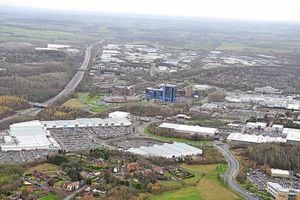
The coming of the new shopping centre, bringing with it a French concept virtually unknown in Britain at that time – a "hypermarket" selling a vast range of food and goods – also provoked divergent views.
For Derek Carpenter, who had a jeweller's business in Dawley High Street, the concept was so new that it was difficult to say how it would affect trade, but he said: "They claim they have sold at 20 per cent under supermarket prices. Well it could affect supermarkets, so the smaller man must look very carefully."
Bill Hoof was one of those of the older generation caught up in the whirlwind. His isolated home – the location is not given – is wanted by the powers that be. Although Mr Hoof is not opposed to being moved, he is not happy about how much he has been offered for his property – just £50! It is a cause celebre and the then Wrekin MP, Dr Tony Trafford, is interviewed on his behalf.
Interviewed in the street, one older resident says: "They haven't any entertainment in the new town. They should have built a hall or something."
But it is not just the older generation of the early 1970s who are critics. Two girls are interviewed, with one saying: "On a Saturday night and Sunday it's just dead."
Interviewer: "Are you saying they've catered for shopping and forgotten everything else?"
"Yeah," say the girls together, and one adds: "They've forgotten the teenagers."
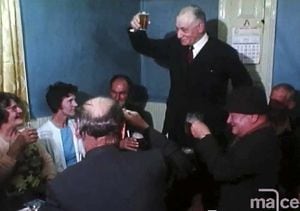
Pupils at the Alexander Fleming School at Sutton Hill are more upbeat.
A youngster previously from Smethwick says he likes Telford because of "the countryside and nice houses and there isn't anybody to boss you around and bullies. Fresh air... you can walk around the estate without main roads."
George Evans of Wellington, who is now in his 90s, is as much a critic of Telford today as he was when he was asked about it on camera around 40 years ago and said: "We thought, well, they can't make Dawley any worse so let them have a go.
"But it's got out of hand and developed into this enormous new town concept which is an illegitimate misconceived idea and has resulted in a lot of people coming in with what they think are very good ideas and imposing them on the local community and now many of them are out of date."
In saying the original ideas were out of date George has been proven to be right, as many of the things done in the name of Telford in the late 1960s and early 1970s have been undone in recent times.
For instance, district centres at Madeley, Woodside, and Sutton Hill have all been knocked down as no longer fit for purpose in the 21st century, and redeveloped – including the Red Admiral at which Rick Williams supped.
Many of the underpasses which were considered space age in those heady days have been filled in because nobody liked to use them.
Towards the end of the compilation there is footage of Percy Pointon giving the traditional "All Friends Round The Wrekin" toast with which he was so associated, with a calendar in the background helpfully bearing the date of June 1970.
An old regular called Fred Richards ventures his opinion on Telford: "I don't think it will be a success.
"It's hard to explain but it's the truth. I don't think it will work out in my opinion."
But there again, there is an opposing view from another drinker: "It's going to be beneficial to the younger generation in the years to come."
The closing commentary does not exactly end on an upbeat note, but there will be many who feel the caustic sentiment remains true today, and which the new Southwater centre is trying to rectify. The city of the future which today is little more than a name in search of an identity. Telford, 30 square miles of Shropshire, is a city without a centre.
"There's no emotional rallying point for the newcomers as there was for the oldtimers in that most ancient of Shropshire monuments, The Wrekin."

